You can easily avoid picking the wrong Chevrolet Malibu model by picking the best Chevrolet Malibu year from our ranking list.
The purpose of this guide is to analyze all generations of Chevrolet Malibu and help you decide which Malibu years are the best to buy and the worst to avoid based on my analysis.
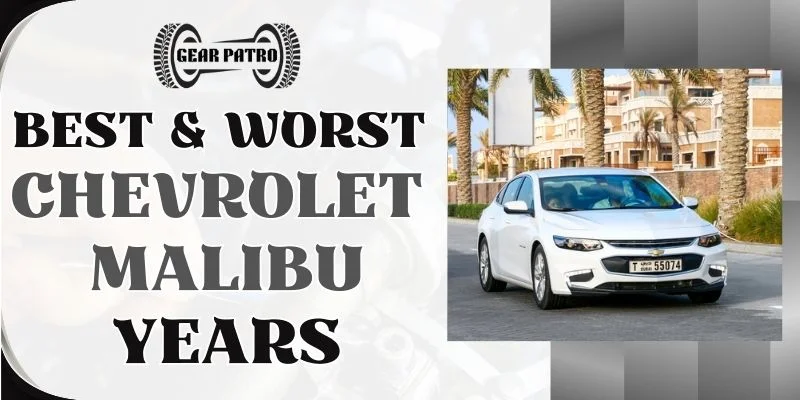
I gathered detailed, credible data on Chevy Malibu’s everyday problems and standout features through exhaustive research, including insights from NHTSA, Consumer Reports, and VehicleHistory.
Throughout this article, I will breakdown recalls, owner complaints, and ratings for various model years of the Chevy Malibu.
Let’s get started.
Chevrolet Malibu Generations
There is a rich history to the Chevrolet Malibu that dates back to the late 1960s. In this guide, we will primarily focus on its fifth and later generations, beginning in 1997.
After a hiatus, the Malibu came back after a long absence; developed on the P90 platform, it offered innovative features at the time that marked a new era for the model.
An overview of its generations from 1997 can be found here.
| Generation | |
| 5th generation (P90) | 1997-2003 |
| 6th generation (GMX380) | 2004-2007 |
| 7th generation (GMX386) | 2008-2012 |
| 8th generation (GMX351) | 2013-2015 |
| 9th generation (E2XX) | 2016-Present |
Recognizing the generational transitions can significantly impact a buyer’s decision, especially when selecting from different model years.
Chevrolet Malibu Best, Neutral, and Worst Years
In order to provide comprehensive and well-informed rankings and categorizations for Chevrolet Malibu’s most and least successful years, we consider a range of factors, including:
For a better understanding of the combined ratings from the sources above, let’s visualize them.
Using the data we collected, we have created a table that categorizes Chevrolet Malibu model years according to their best, neutral, or worst characteristics.
| Generation | Best Years | Neutral Years | Worst Years |
| 5th generation (P90) | 2002 2003 | 2001 | 1997 1998 1999 2000 |
| 6th generation (GMX380) | 2007 | N/A | 2004 2005 2006 |
| 7th generation (GMX386) | 2011 2012 | N/A | 2008 2009 2010 |
| 8th generation (GMX351) | 2015 | N/A | 2013 2014 |
| 9th generation (E2XX) | 2020 2021 2022 2023 2024 | 2019 | 2016 2017 2018 |
Our classification of “Neutral Years” is based on the fact that they neither exhibit outstanding qualities nor significant drawbacks.
There are some factors that influence these rankings in a detrimental way, like the NHTSA recalls. It is important to note that increased complaints and recalls indicate lower reliability and can negatively affect the overall rating of the model year.
We are now going to examine the specifications of Chevy Malibu models from the best to the worst.
Best & Worst Years for Chevrolet Malibu 5th Generation (1997-2003)
In 1997, Chevrolet launched the fifth generation Malibu, an affordable, stylish, and powerful midsize sedan.
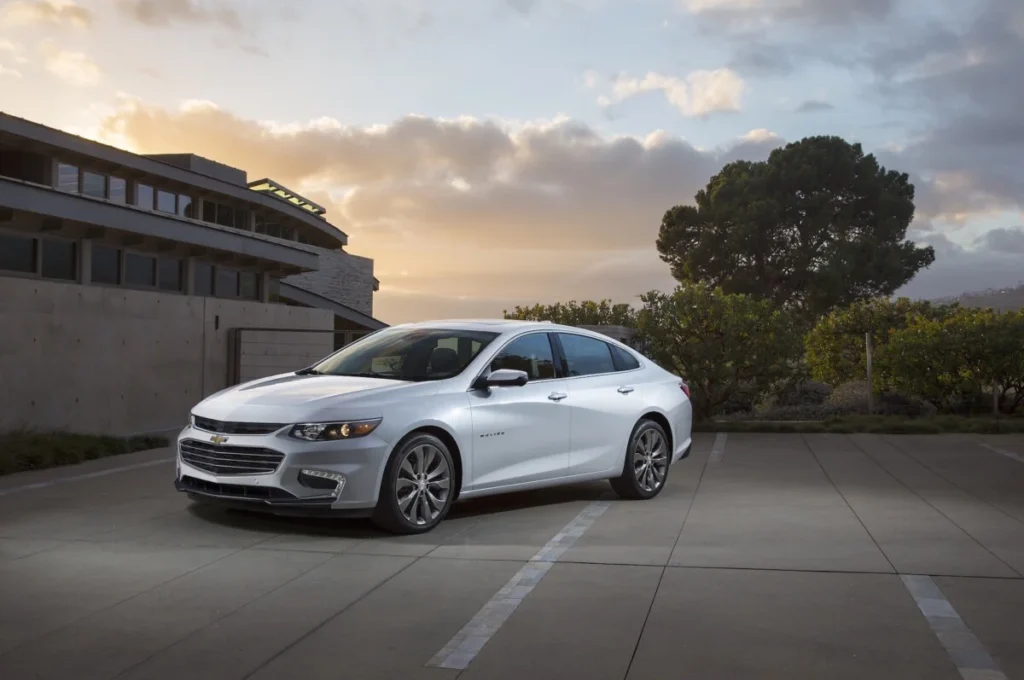
In this generation, the best Chevy Malibu years are 2002 and 2003, while the worst years are 1997 to 2000.
The Best Years: 2002, 2003
Among the best Chevy Malibu years of this generation, 2002 and 2003 are undeniably the best.
It had been several years since the Chevrolet Malibu was initially problematic, but improvements had been made by 2002 and 2003.
Fuel economy for these models was decent at 15 mpg in city driving and 32 mpg on highways, thanks to the 3.1L V6 engine and the 4-speed automatic transmission.
There is now a wider range of trim-level options in the LS version, ranging from the base to the LS.
This year, they upgraded their interior materials, audio systems, power accessories, and power accessories.
Improved crashworthiness was achieved through the addition of dual front airbags, anti lock brakes, and an improved chassis design.
In spite of this, vehicles sometimes stalled or failed to start due to ignition switch problems.
The Neutral Years: 2001
In 2001, the Chevrolet Malibu went through a transitional period.
This model still had just a few traces of the problems from the earlier years, even though it had the same engine and transmission as the later models.
There was an emphasis on improving driver comfort and convenience when it came to technological features. While safety features continued to remain consistent, daytime running lights were notable additions.
There was a reduction in the number of problems reported, such as the ignition switch and Dex-Cool antifreeze issues, but there were still plenty of problems reported.
The Worst Years: 1997, 1998, 1999, 2000
When should Chevy Malibu be avoided? It is best to avoid Chevy Malibu models produced in 1997, 1998, 1999, and 2000.
From electrical system malfunctions to engine problems, the 1997 Chevy Malibu was plagued with numerous problems.
This car had a notorious ignition switch defect, which caused it to stall unpredictably or fail to start.
GM was also criticized for using Dex-Cool antifreeze, which caused corrosion in components of the engine, leading to engine failures.
It has been reported that the intake manifold gasket on the Chevy Malibu 1998 frequently leaks, resulting in antifreeze mixing with oil and causing damage to engine internals.
A common complaint was faulty ABS sensors and excessive wheel bearing wear resulting in braking problems.
Chevrolet Malibu models from 1999 and 2000 had numerous recalls due to these issues, particularly the ignition switch problem.
Chevrolet Malibu recalls and complaints for 1997, 1998, 1999, 2000, 2001 can be found at the NHTSA website.
Best & Worst Years for Chevrolet Malibu 6th Generation (2004-2007)
With a modernized design, new platform, and improved technology, the sixth generation of the Chevrolet Malibu introduced in 2004 represented a significant improvement over its predecessors.
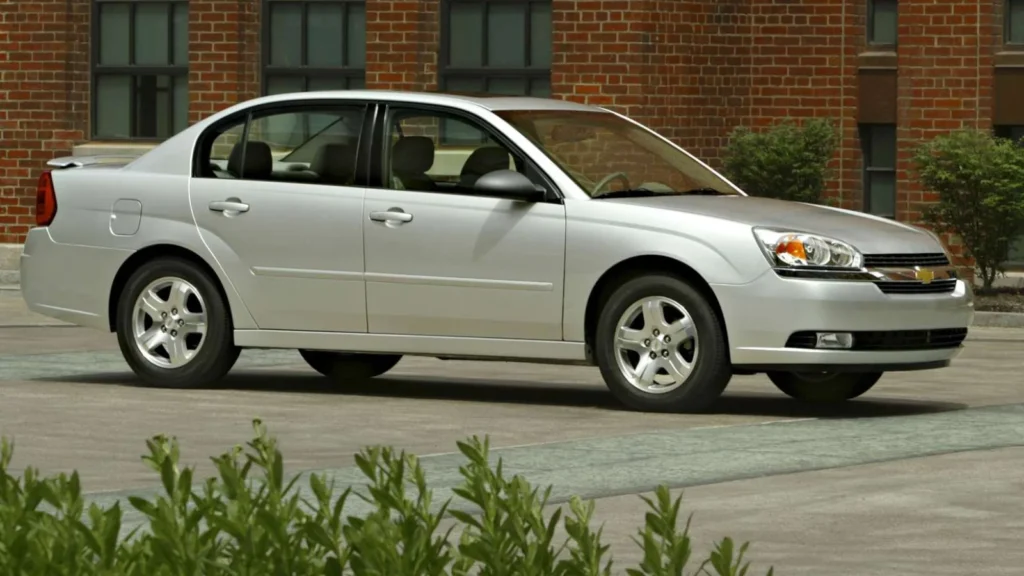
In this generation, the best Chevy Malibu year is 2007, while the worst Chevy Malibu years are 2004, 2005, and 2006.
The Best Years: 2007
As a result of relatively high ratings from previous owners on platforms like VehicleHistory, we consider 2007 as the best year for Chevy Malibu in the sixth generation.
In this model year, there were various engine options, including a 2.2L 4-cylinder and a 3.5L V6 that was more powerful and efficient. A refined automatic transmission was paired with these engines, resulting in a smooth ride.
The average fuel consumption of these models was 16 mpg in the city and 38 mpg on the highway, according to Consumer Reports.
Chevrolet Malibu offered various trim levels, including LTZ and SS variants, which included heated leather seats, advanced infotainment systems, and sport-tuned suspensions.
As well as curtain-side airbags, front seat airbag occupancy sensors were also introduced, improving safety.
The Worst Years: 2004, 2005, 2006
However, you should steer clear of the Chevy Malibu models from 2004, 2005, and 2006.
Over a thousand complaints were filed with the NHTSA in 2004 about steering problems in Chevy Malibu. Multiple model-year GM recalls resulted from owners reporting intermittent or total loss of power steering assistance.
Regardless of new engine technologies, ignition switch failures remain a sore point, leading to engine stalls and difficulties starting the car.
New problems appeared with the 2005 and 2006 Chevy Malibu models, including intermittent illuminations and brake light failures. For models dating back to 2004-2012, GM issued a recall in 2014 to address brake light concerns.
Furthermore, faulty airbags, broken seat welds, and inaccurate fuel gauges were listed among the grievances.
For recalls and complaints about the Chevrolet Malibu in 2004, 2005, and 2006, visit the NHTSA website.
Best & Worst Years for Chevrolet Malibu 7th Generation (2008-2012)
As Chevrolet’s ambitious attempt to compete with the midsize sedan market that dominated, the seventh generation of the Malibu was launched in 2008.
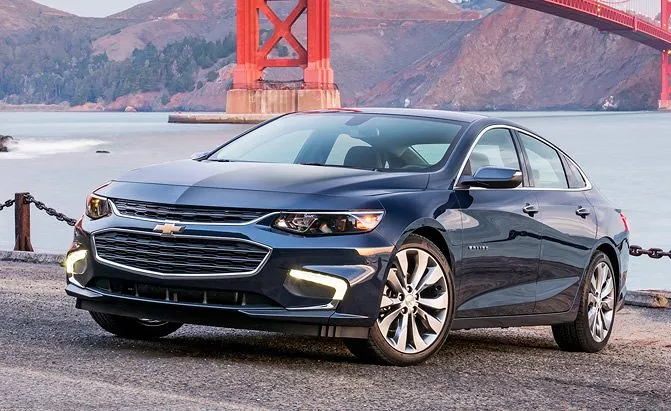
Based on scores from J.D Power and Consumer Reports, 2011 and 2012 are the best years to buy a Chevy Malibu, whereas 2008, 2009, and 2010 should be avoided.
The Best Years: 2011, 2012
There is no doubt that 2011 and 2012 are the best Chevy Malibu years of the seventh generation despite having issues from previous years.
For those seeking more power, one could also choose a 3.6L V6 engine instead of the standard 2.4L four. An automatic transmission paired both engines with fuel efficiency of 16 mpg in the city and 38 mpg on the highway.
There was an available touchscreen navigation system as well as Bluetooth and USB connectivity during these years.
A range of trim levels has been added, including options such as LT and LTZ, providing a range of luxury features and audio systems.
A number of safety features became standard across all models, including stability control, front-seat side airbags, and side curtain-type airbags.
In spite of this, there were some issues with the 2007 Chevy Malibu. There have been reports of timing chain problems among some owners.
The Worst Years: 2008, 2009, 2010
When should you avoid buying a Chevy Malibu? In this generation, Chevy Malibu models from 2008, 2009, and 2010 should be avoided.
There were a lot of issues with the 2008 Malibu that were similar to those of its predecessors. A lingering issue from previous generations has resurfaced with power steering.
Among other issues, the “service ESC” light illuminated intermittently and the brake light failed.
It became common among owners to complain about intermittent illumination of the brake lights in particular.
Chevrolet Malibu models from 2009 and 2010 added a number of problems of their own. A number of reports have been published regarding seatbelt malfunctions, particularly with regard to the steel cable anchoring the seatbelts.
A number of other complaints focused on airbags as well as engine stalling incidents, which were more concerning.
Here are recalls and complaints associated with the Chevrolet Malibu from 2008, 2009, and 2010.
Best & Worst Years for Chevrolet Malibu 8th Generation (2013-2015)
In 2013, Chevrolet introduced the 8th generation Malibu, a vehicle that strives to redefine itself amidst an industry that is constantly changing.
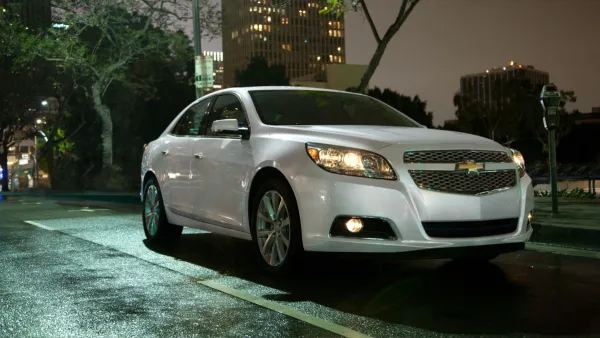
With outstanding ratings from J.D Power, Edmunds, VehicleHistory, and Consumer Reports, the 2015 Malibu stands out among its competitors. Although 2014 presents problems as well, Chevy Malibu is a model to avoid like the plague in 2013.
The Best Years: 2015
As the best Chevrolet Malibu year of the sixth generation, 2015 stands out with 84 J.D Power points and 5 Consumer Reports points.
As a result of Chevy’s efforts to address the concerns raised in earlier models, in this year’s model, the sedan has become more refined and reliable.
In the 2015 Malibu, drivers can choose from a 2.5L four-cylinder engine with stop-start technology, which improves fuel efficiency. Those who wanted more power and fuel economy could also choose the turbocharged 2.0L four-cylinder.
For city driving, the average fuel consumption was 17 mpg and for highway driving, it was 38 mpg.
This year’s Chevy Malibu featured Chevrolet’s MyLink multimedia system, which featured a 7-inch touchscreen, voice control, and smartphone integration.
Safety enhancements, including forward collision alert, lane departure warning, and blind-spot monitoring, were also highlighted.
The Worst Years: 2013, 2014
There is no doubt that 2014 and 2013 were the worst years for Chevy Malibu. You should avoid the Chevy Malibu model year 2013 because it has 11 NHTSA recalls and numerous owner complaints.
Owners reported partial or complete power outages due to electrical and engine issues. There has been a cascade of electrical failures that have affected systems like the power steering assist.
An electrical system malfunction was the target of four recalls, while suspension problems were addressed by four others.
The 2014 Chevy Malibu experienced continued problems. A reduction in brake performance and an increase in accident risk were caused by a loss of brake vacuum assist. To emphasize the seriousness of the situation, General Motors issued a recall.
Further, GM recalled another vehicle due to defective windshield defrosters.
For Chevrolet Malibu recalls and complaints from 2013, 2014, please visit the NHTSA website.
Best & Worst Years for Chevrolet Malibu 9th Generation (2016-2024)
A forward-thinking design, technological advances, and performance enhancements were the hallmarks of the 9th generation Chevrolet Malibu, which launched in 2016.
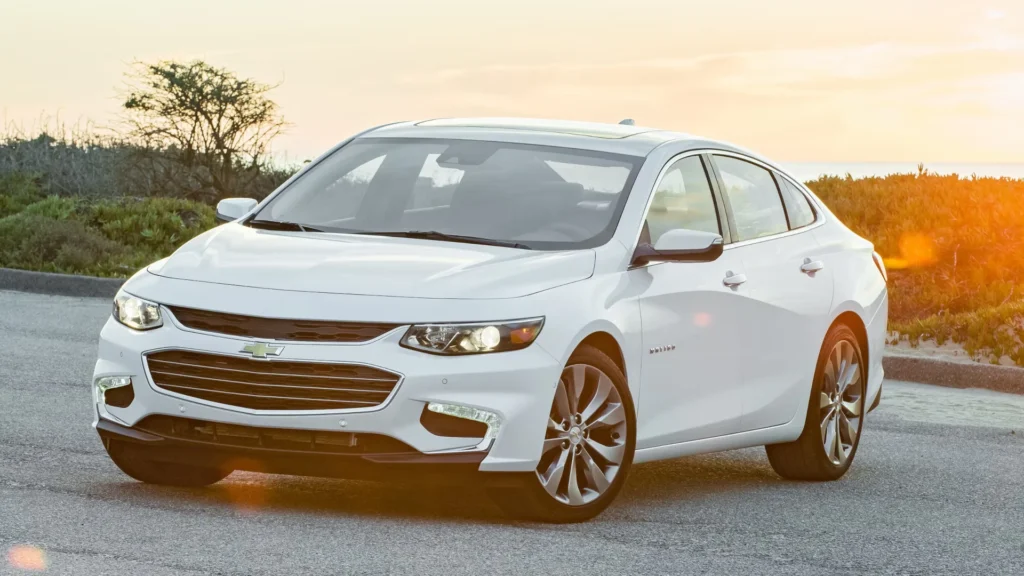
The Chevy Malibu years 2016 through 2018 should be avoided, while the Chevy Malibu years 2020 to 2023 should be considered the most reliable years of this generation.
The Best Years: 2020, 2021, 2022, 2023, 2024
Which Chevy Malibu years are most reliable? There can be no doubt that Chevy Malibu’s best years in this generation are the facelifted versions of the seventh generation – 2020, 2021, 2022, 2023, and 2024.
The Malibu was available with many engine options by 2020, including a powerful 2.0L turbo-four coupled with a CVT transmission, as well as a highly efficient 1.5L turbocharged four-cylinder.
The company introduced hybrid models catering to eco-conscious consumers, achieving superior fuel efficiency of 19 mpg in the city and 41 mpg on the highway without sacrificing performance.
In addition to HD screens and intuitive interfaces, the infotainment systems are seamlessly integrated with smartphones.
As a result of these technologies, advanced safety features such as adaptive cruise control, lane-keeping assist, and automated emergency braking have become standard.
Its refined exterior styling, opulent interior, and performance tweaks made the 2023 and 2024 Chevy Malibu models stand out in this trend.
Best & Worst Chevrolet Suburban Years
Best & Worst Chevrolet Equinox Years
Best & Worst Chevrolet Tahoe Years | Years To Avoid
Best & Worst Chevrolet Cruze Years | Years To Avoid
Best & Worst Chevrolet Silverado Years
Best & Worst Chevrolet Traverse Years | Years To Avoid
Best & Worst Chevrolet Colorado Years | Years To Avoid
The Neutral Years: 2019
The 2019 Chevy Malibu saw a mid-cycle refresh with improved aesthetics and an infotainment system.
There were no significant changes to the engine options from previous years. There was a feeling that the Malibu was poised to become something even greater among critics and consumers, despite the 1.5L turbo-four and 2.0L turbo-four delivering adequate performance.
The 2019 Malibu also features a Semi-Autonomous Parking System, Low-Speed Forward Automatic Braking, IntelliBeam high beam assist headlamps, and a Low-Speed Forward Automatic Braking.
The Worst Years: 2016, 2017, 2018
You should steer clear of the Chevy Malibu years 2016, 2017, and 2018 due to a low rating on Edmunds and J.D Power and a relatively high number of recalls issued by the NHTSA.
The common complaints from owners were that their engines were stalling or putting out less power. In some cases, the vehicle could not be shut down even when the transmission was correctly positioned, resulting in a “Shift to Park” message.
These trends were unfortunately continued by the 2017 and 2018 Chevy Malibu models. There was criticism that GM failed to adequately respond to the concerns raised the previous year.
There have been several recalls related to the 2018 model. It was discovered that there was a bug in the Engine Control Module (ECM) software for models with the 1.5L turbo engine, which might result in disabled fuel injectors and consequent engine stalls.
Check out the NHTSA’s 2016 recalls, 2017 recalls, and 2018 Chevrolet Malibu complaints.
Conclusion
There’s no denying that Chevy Malibu’s journey is an interesting one, but after exploring the vehicles’ journey, it’s obvious that the 2015 and 2019-2024 models are clearly the best years to buy a Chevy Malibu. There are some Chevy Malibu years that you shouldn’t purchase, such as 2004 and 2013.
Can you tell me about your favorite model year of the Chevrolet Malibu and why? Is your preference influenced by personal experiences?
Comment below to share your thoughts!
